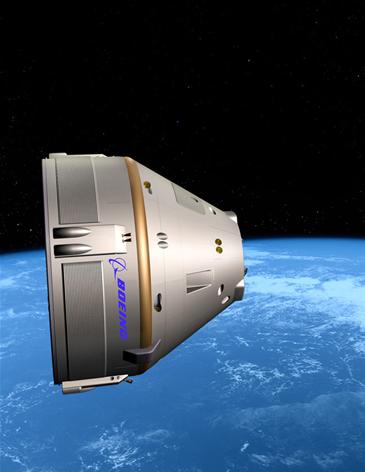 Boeing CST-100 Image Credit: Boeing |
NASA announced the second round of funding in the Commercial Crew Development (CCDev) program.
Boeing was the big winner in CCDev-2, getting $92.3 million, on top of the $18 million it won last year. The initial $18 million allowed Boeing to complete several risk reduction demonstrations and a System Definition Review (SDR) in October, 2010. The CST-100’s system characteristics and configuration were base-lined. Boeing designed, built and tested a pressurized structure of the crew module. It also developed an avionics systems integration facility to support rapid prototyping and full-scale development. |
| Boeing notes that the CST-100 spacecraft relies on proven materials and subsystem technologies that are safe and affordable.
Plans include ferrying astronauts and supplies to the International Space Station (ISS), as well as crew and passengers to the Space Station being proposed by Bigelow Aerospace. The CST-100 is designed to carry up to seven passengers and is designed to be launched by a number of different expendable launch vehicles. These include United Launch Alliance’s Delta 4 and Atlas 5, Space Exploration Technologies’ Falcon 9, and the European Ariane 5. NASA’s new 14-month CCDev-2 Space Act Agreement will enable Boeing to further mature its system to a Preliminary Design Review (PDR), a critical step that ensures the system design meets all requirements. |


















